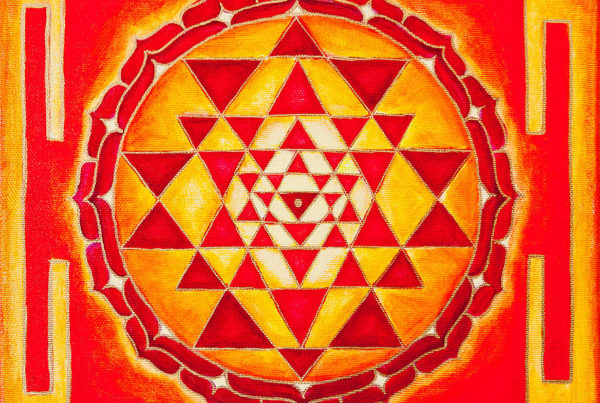nāntaḥ-prajñam, na bahiṣ prajñam, nobhayataḥ-prajñam
na prajnañā-ghanam, na prajñam, nāprajñam;
adṛṣtam, avyavahārayam, agrāhyam, alakṣaṇam,
acintyam, avyapadeśyam, ekātma-pratyaya-sāram,
prapañcopaśamam, śāntam, śivam, advaitam,
caturtham manyante, sa ātmā, sa vijñeyaḥ.
– Māṇḍūkya Upaniṣad.
One of the standard ways in which Upanishads speak of the supreme reality is by means of telling us what it is not. For example in the above verse on Turiya, starts with nāntaḥ-prajñam (not inwardly cognitive), referring to the state of dreams equivalent to the condition of the subtle body. The powers of the mind that we use for functioning like seeing, hearing, speaking are in the realm of the subtle body. So it says that Turiya is not these inner powers we have. Neither is it bahiṣ prajñam (outward cognition), of speech, or hearing, or seeing as used in our interaction with outside world. Then it says it is not even ubhayatah-prajñam, neither a mix of the inner and outer powers. During conditions of lucid dreaming we maybe sleeping yet we can be cognizant of the world outside, so both our subtle and gross faculties come into play. But Turiya is not even this.
Next the verse uses the term prajnañā-ghanam – indefinite mass of cognition. Prajña is a term used in the Upanishad to indicate the condition of deep dreamless sleep where there is no experience at all. This is equivalent to entering the causal body, the Karana sharira of the individual, where all the seeds or root causes of manifestation are present for everyone. When all the prajña of every animate being is taken together at the cosmic scale, it becomes Isvara, the Lord, who is the cause and seed of all creation. But Turiya not even this causal body, hence na prajnañā-ghanam, neither is it collective cognition (or by inference Isvara) na prajñam, nor na aprajñam, non-congnition or nescience, or Nihilism.
Then the verse goes onto say that, Turiya, is unseen, unrelated, inconceivable, uninferable, unimaginable, indescribable. It is the essence of the one Self-cognition common to all states of consciousness, that is waking, dreaming or deep sleep (gross body, subtle body and causal body). All phenomenon cease in it. It is peace. It is bliss, it is non-dual. This is the Self, and it is to be realized.
Gaudapada in his famous exposition called the Māṇḍūkya Karika explains that non—cognition of duality is common to both Prajna and Turiya. But Prajna is associated with sleep in the form of cause and this sleep does not exist in Turiya. In other words, consider the state of perfect dreamless sleep. That is prajna. Now imagine the same condition of non-congintion as in dreamless sleep, but experienced while awake. That is Turiya. And this remains as a constant witness inside us during all times and all states, waking, dreaming, and deep sleep, and to realize it is the ultimate goal.
* * *
The Māṇḍūkya is the shortest of all the Upanishads, consisting of 12 verses discussing the sound ॐ, and its relation to the four states of consciousness. This Upanishad is considered so important in the Vedantic literature that in another Upanishad called Muktikā, Rama while teaching Vedanta to Hanuman says that just one, Māṇḍūkya, is enough to gain liberation.







